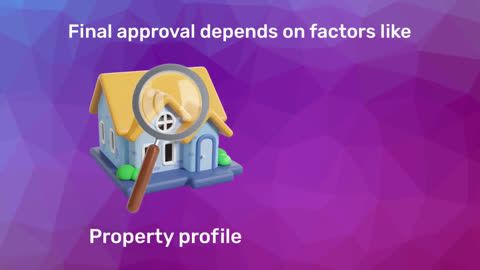What is Section 115BAC of the Income Tax Act?
Section 115BAC of the Income Tax Act, introduced in the Union Budget 2020, brought a new way to calculate income tax. It offers lower tax rates, but at the cost of most exemptions and deductions. This new tax regime is meant to provide taxpayers with an alternative and simplify tax compliance.In simple terms, Section 115BAC gives taxpayers two options:
1. Old regime: With higher tax rates but the benefit of multiple deductions and exemptions like 80C (investments), 80D (health insurance), HRA (House Rent Allowance), and more.
2. New regime: With lower tax rates but without most exemptions and deductions.
Additional read: New tax regime income tax slabs
Why Section 115BAC matters?
Choosing between the old and new regime is crucial. Your decision will impact your tax liability and cash flow. The new tax regime under Section 115BAC is particularly beneficial if you do not have many investments or exemptions to claim.For instance, if you have a home loan, the old regime allows you to claim tax deductions on the interest you pay on your loan under Section 24(b). But, if you opt for the new tax regime, you will not get this benefit. So, it is essential to analyse your expenses and investments before making a choice.
Benefits of the new tax regime under Section 115BAC of the Income Tax Act
The new regime offers lower tax rates for different income slabs, making it simpler and less cumbersome for taxpayers without significant deductions. Here is a quick comparison of the tax rates:| Income slab (Rs.) | Old regime tax rate | New regime tax rate |
| Up to 2.5 lakh | Nil | Nil |
| 2.5 - 5 lakh | 5% | 5% |
| 5 - 7.5 lakh | 20% | 10% |
| 7.5 - 10 lakh | 20% | 15% |
| 10 - 12.5 lakh | 30% | 20% |
| 12.5 - 15 lakh | 30% | 25% |
| Above 15 lakh | 30% | 30% |
Who should opt for the new tax regime?
The new tax regime under Section 115BAC is ideal for those who do not have a lot of investments, expenses, or deductions to claim. It is beneficial if you have:- No home loan or major investments.
- A simple salary structure with minimal allowances and exemptions.
- A preference for lower tax rates and straightforward calculations.
Considerations for taxpayers with home loans and investments
If you have a home loan, you might lean towards the old tax regime. Why? The old regime allows you to claim deductions on the interest paid on your home loan under Section 24(b) and the principal repayment under Section 80C. This can significantly reduce your taxable income.For example, if you have a Bajaj Housing Finance Home Loan, the deductions on interest and principal can lower your tax burden by several thousand rupees annually. So, if you are actively repaying a home loan, the old regime might be more beneficial.
Impact of Section 115BAC?
If you choose the new tax regime, most of the deductions under Chapter VI-A of the Income Tax Act will not be applicable. Here are some of the financial products affected:1. Life insurance policies: Premiums paid towards life insurance will not be deductible under Section 80C in the new regime.
2. Health insurance: Under the new tax regime, premiums paid towards health insurance will not qualify for deduction under Section 80D.
3. Home loans: Interest paid on home loans will not get the deduction benefit in the new regime, as discussed earlier.
4. Retirement funds and PPF: Contributions to retirement funds like EPF or PPF will not help reduce your taxable income if you opt for the new regime.
How to choose between the old and new tax regime
To decide between the old and new tax regimes under Section 115BAC of Income Tax Act, consider the following:- Calculate your total deductions and exemptions under the old regime.
- Compare your tax liability under both regimes.
- Choose the one that offers lower tax liability.
How to opt for the new tax regime?
If you are a salaried employee, you need to inform your employer at the start of the financial year if you want to opt for the new tax regime. You can switch back to the old regime while filing your income tax return.For business owners and professionals, once you opt for the new tax regime, you can only switch back once in your lifetime. So, choose wisely.
Is Section 115BAC a long-term solution?
The introduction of Section 115BAC of Income Tax Act is aimed at simplifying the tax structure and offering taxpayers a choice. However, it might not be suitable for everyone in the long term. If your income and investments change over time, you may find that the old regime becomes more beneficial.For instance, if you are planning to buy a house in the near future with the help of a Bajaj Housing Finance Home Loan, the old regime can help you claim tax benefits and reduce your overall liability.
Choosing between the old and new tax regimes under Section 115BAC of Income Tax Act is not a one-size-fits-all decision. It depends on your financial situation, investments, and expenses. If you have a home loan, investments in tax-saving instruments, or insurance policies, the old regime might still offer better tax benefits.
If you are unsure, consulting a financial advisor can help you make an informed choice.
To plan better, consider using tools like home loan EMI calculators or income tax calculators. These tools can give you a clearer picture of your tax liabilities and help you decide which regime is best suited for you.
Explore Bajaj Housing Finance Home Loan
For those planning to take a home loan, Bajaj Housing Finance offers convenient funding solutions. Here are a few benefits of opting for a home loan from us:1. High loan amount: Make your homeownership dreams a reality with a loan amount of up to Rs. 15 crore*.
2. Low interest rates: Enjoy affordable EMIs starting at just Rs. 741/lakh*, with interest rates as low as 8.25%* p.a.
3. Fast approval: Get your loan sanctioned in as little as 48 Hours*, or even sooner.
4. No foreclosure charges: With a floating interest rate, you can prepay or close your loan without any extra fees.
5. Hassle-free application: Our convenient document pickup service means you will not have to visit the branch multiple times.
Do not wait any longer—apply for a Bajaj Housing Finance Home Loan today and move closer to owning your dream home.




